Successful honey-hunters know how to communicate with wild birds
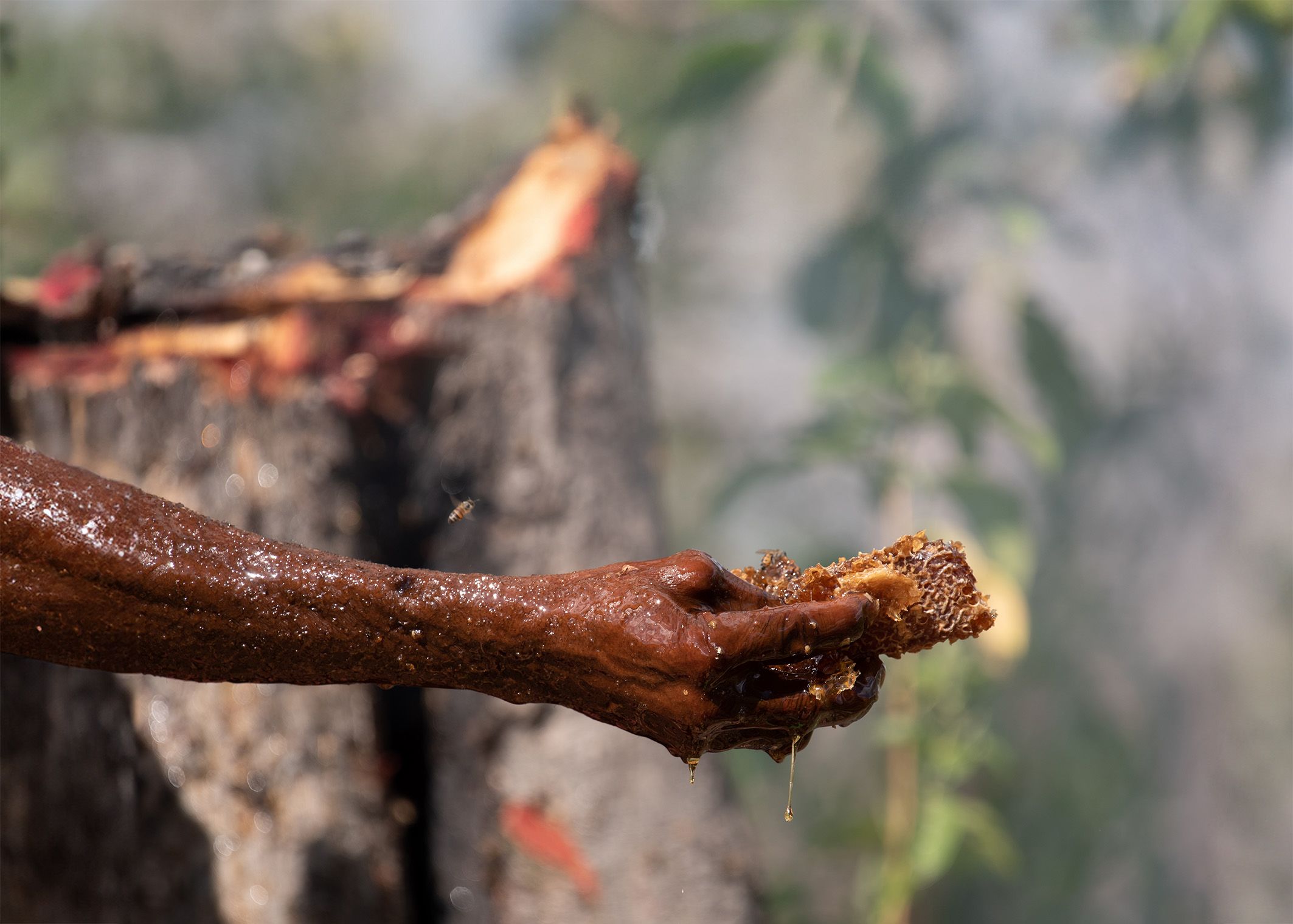
Wild honeyguide birds prefer to cooperate with people who have learned local cultural traditions to find and access honey-filled bees’ nests, a new study has found.

In many parts of Africa, humans cooperate with a species of wax-eating bird called the greater honeyguide, Indicator indicator, which leads them to wild bees’ nests with a chattering call. By using specialised sounds to communicate with each other, both species can significantly increase their chances of accessing calorie-dense honey and beeswax.
Human honey-hunters in different parts of Africa use different calls to communicate with honeyguides. In a new study, researchers have discovered that honeyguide birds in Tanzania and Mozambique discriminate among honey-hunters’ calls, responding much more readily to local than to foreign calls.
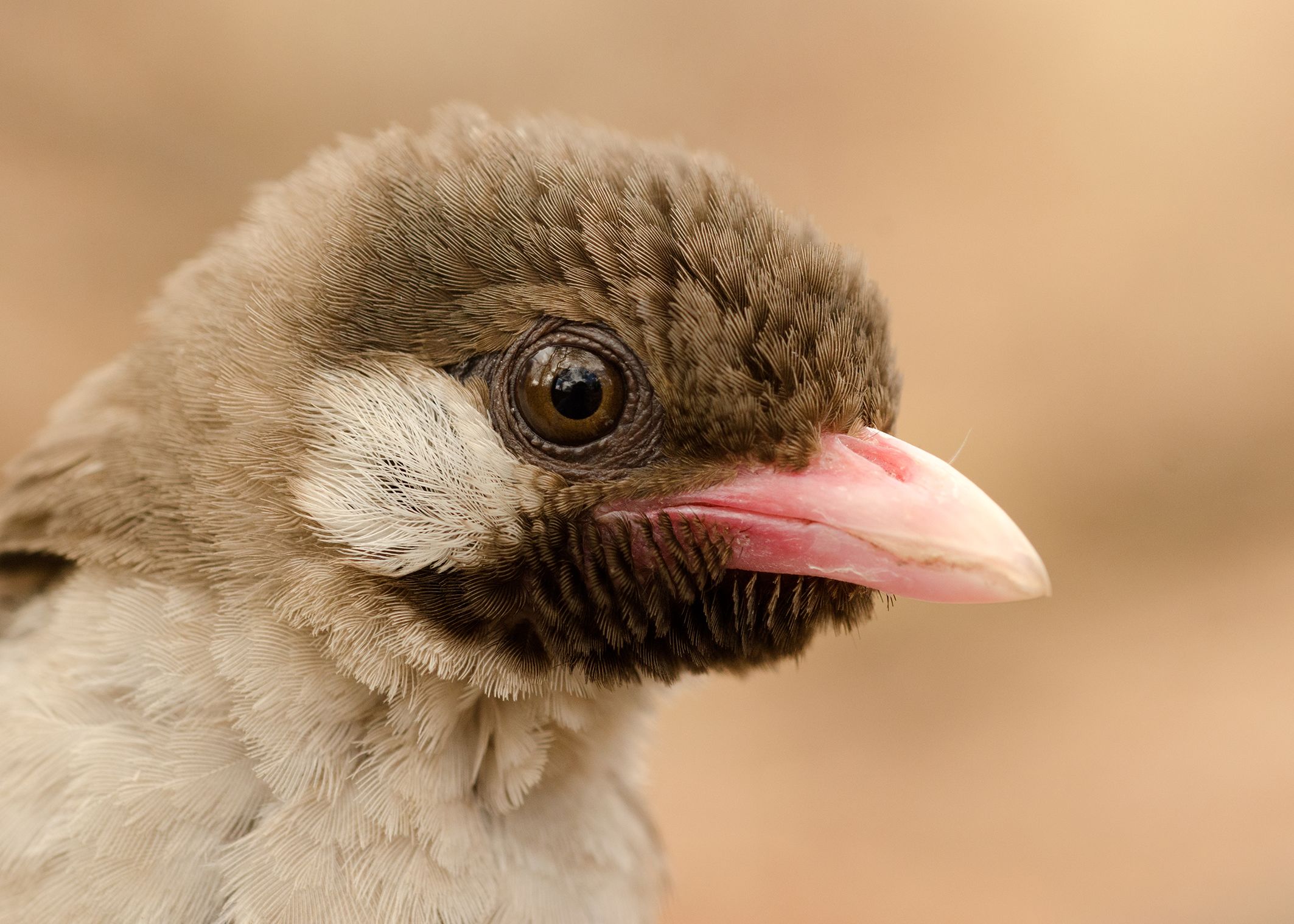
Male honeyguide in Niassa Special Reserve, Mozambique
Male honeyguide in Niassa Special Reserve, Mozambique
“We found that honeyguides prefer the calls given by their local human partners, compared to foreign calls and arbitrary human sounds."
Dr Claire Spottiswoode
"This benefits both species, since it helps honey-hunters attract a honeyguide to show them hard-to-find bees’ nests, and helps honeyguides to choose a good partner to help them to get at the wax," said Spottiswoode, an evolutionary biologist at the University of Cambridge’s Department of Zoology and the University of Cape Town, and joint lead author of the paper.
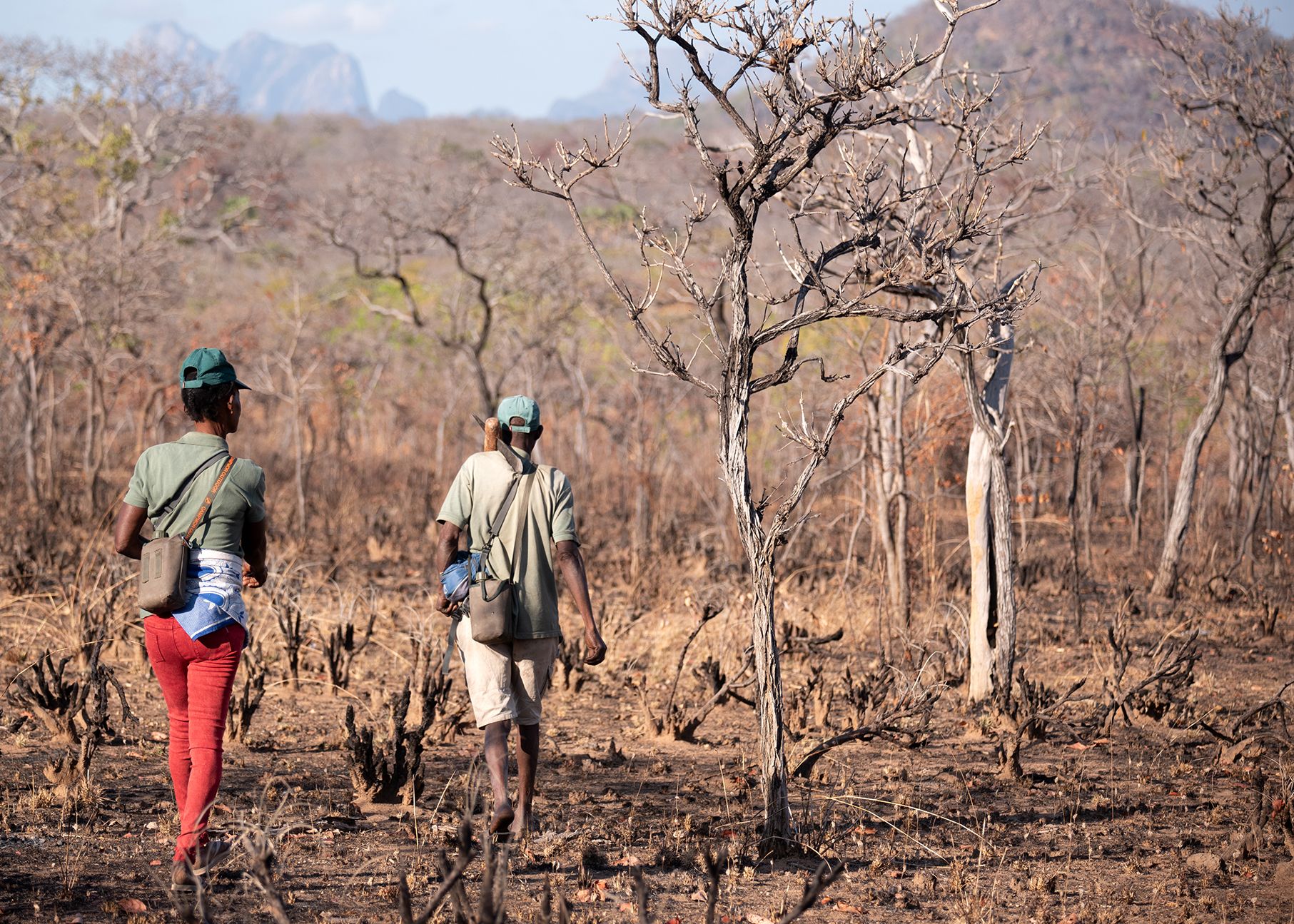
Hadza honey-hunters in Tanzania communicate with honeyguides using a melodic whistle
Yao honey-hunters in Mozambique use a trill followed by a grunt
The experiments showed that honeyguides in the Kidero Hills, Tanzania are over three times more likely to cooperate with people giving the local Hadza whistle, than people giving the ‘foreign’ Yao trill and grunt. And the honeyguides in the Niassa Special Reserve, Mozambique are almost twice as likely to cooperate in response to the local Yao trill and grunt, than the ‘foreign’ Hadza whistle.
The phenomenon seems to be self-reinforcing: honeyguides learn to recognise that a specific call indicates a good honey-hunting partner, and humans are more successful in attracting the birds if they use this call.
People who use a different call are less likely to attract a bird to guide them to the honey – so it’s in their interests to stick to the sounds used locally.
“Once these local cultural traditions are established, it pays for everyone – birds and humans – to conform to them, even if the sounds themselves are arbitrary,” said joint lead author Dr Brian Wood, an anthropologist at the University of California, Los Angeles.
The researchers compare this to different human languages, in which the sounds of words are arbitrary, but everyone has agreed on their meaning.
Spottiswoode added: “Just as humans across the world communicate using a range of different local languages, people across Africa communicate with honeyguide birds using a range of different local sounds.”
Like language, these culturally determined calls convey an underlying meaning – signalling a desire to partner with the bird to find honey.
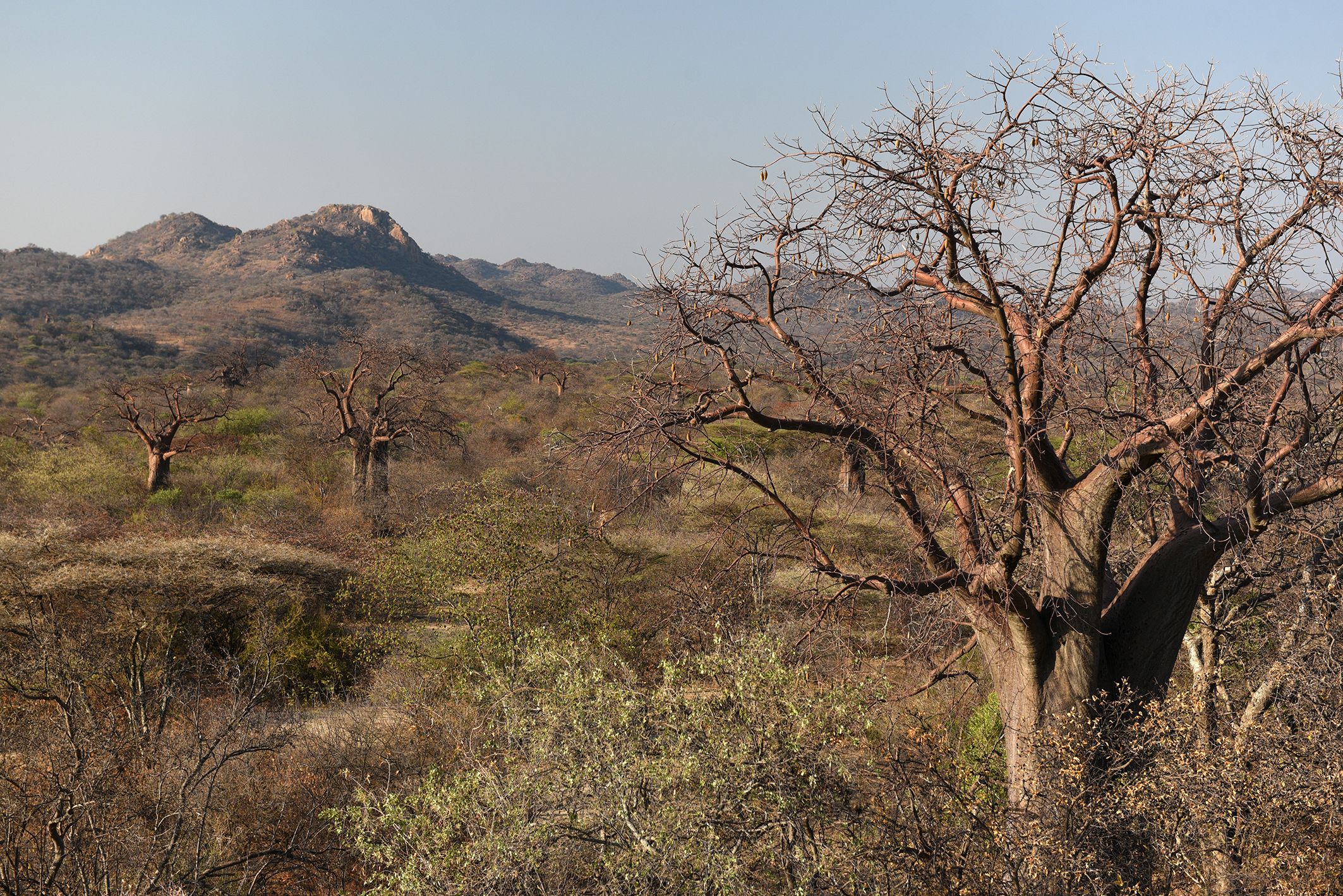
The study is published today in the journal Science.
It is likely that cultural factors relating to the wider hunting practices of different groups have helped to shape the precise design of their honey-hunting calls.
For example, the melodic whistle made by Hadza honey-hunters in Tanzania to attract honeyguide birds sounds like a bird call. This reduces the risk of frightening away the prey animals they’re trying to hunt at the same time.
In contrast, the loud trill followed by a grunt made by Yao honey-hunters in Mozambique, sounds distinctively human. This may be a good way for them to frighten away dangerous large animals like elephants and buffalo.
The findings build on work published in 2016, which found that honeyguide birds in Mozambique respond to the calls of human honey hunters.
The researchers work closely with the Yao and Hadza honey-hunting communities in Africa, whose guidance they have relied on for over a decade.
“It’s such a privilege to witness cooperation between people and honeyguides – these are birds who specifically come to seek us out. The calls really sound like a conversation between the bird and the honey-hunters, as they move together towards a bees’ nest.”
Spottiswoode
Humans are useful collaborators to honeyguides because of our ability to subdue stinging bees with smoke and chop open the nest, providing wax for the honeyguide and honey for ourselves.
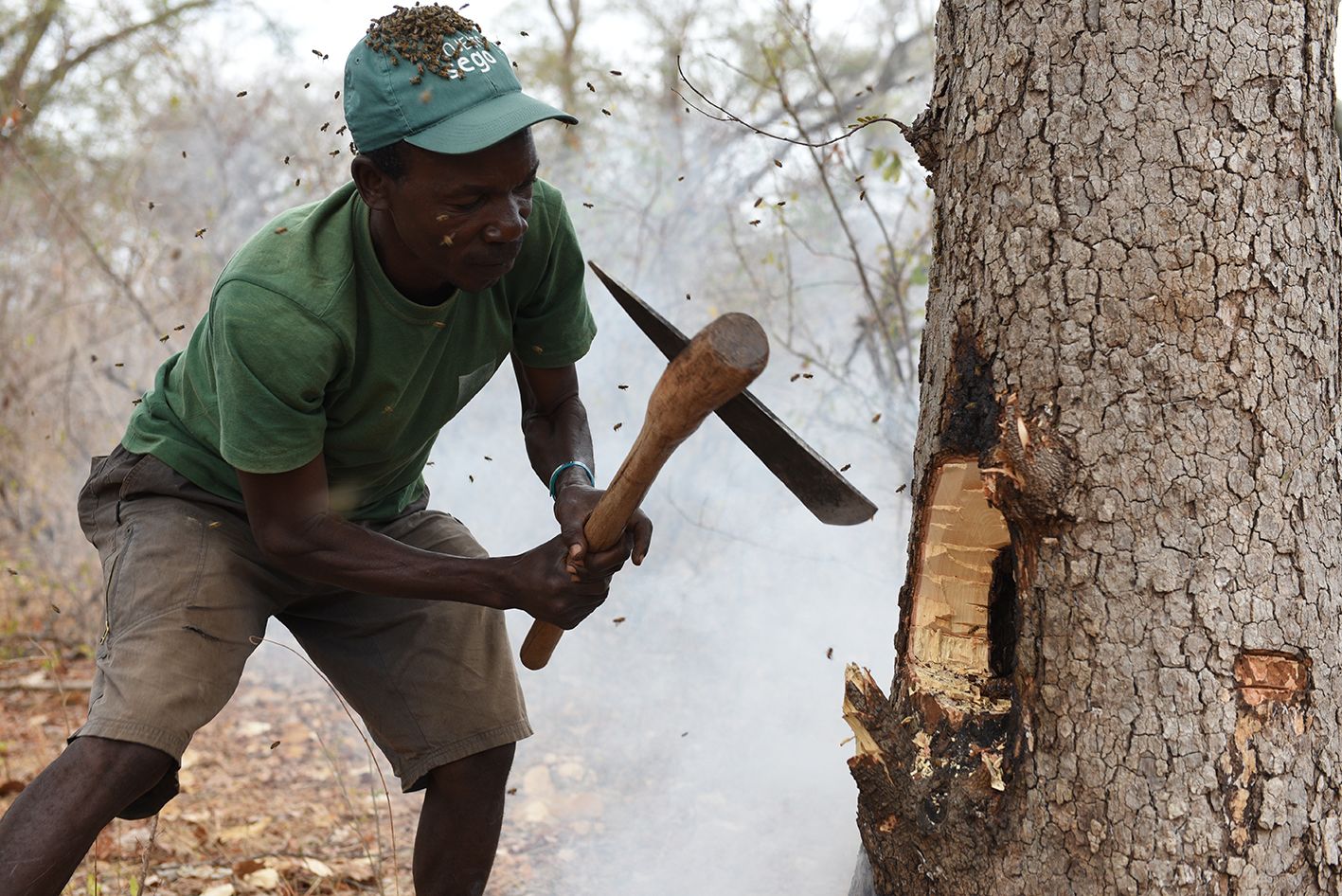
Yao honey-hunter Carvalho Issa Nanguar harvests a bees' nest with smoke and axe
Yao honey-hunter Carvalho Issa Nanguar harvests a bees' nest with smoke and axe
This relationship is a rare example of cooperation between humans and wild animals. Wild honey is a high-energy food that can provide up to 20% of the calorie intake for honey-hunters – and the wax they share or discard is a valuable food for the honeyguide.
“What’s remarkable about the honeyguide-human relationship is that it involves free-living wild animals whose interactions with humans have evolved through natural selection, possibly over the course of hundreds of thousands of years,” said Spottiswoode.
She added: “This ancient, evolved behaviour has then been refined to local cultural traditions – the different human call sounds – through learning.”
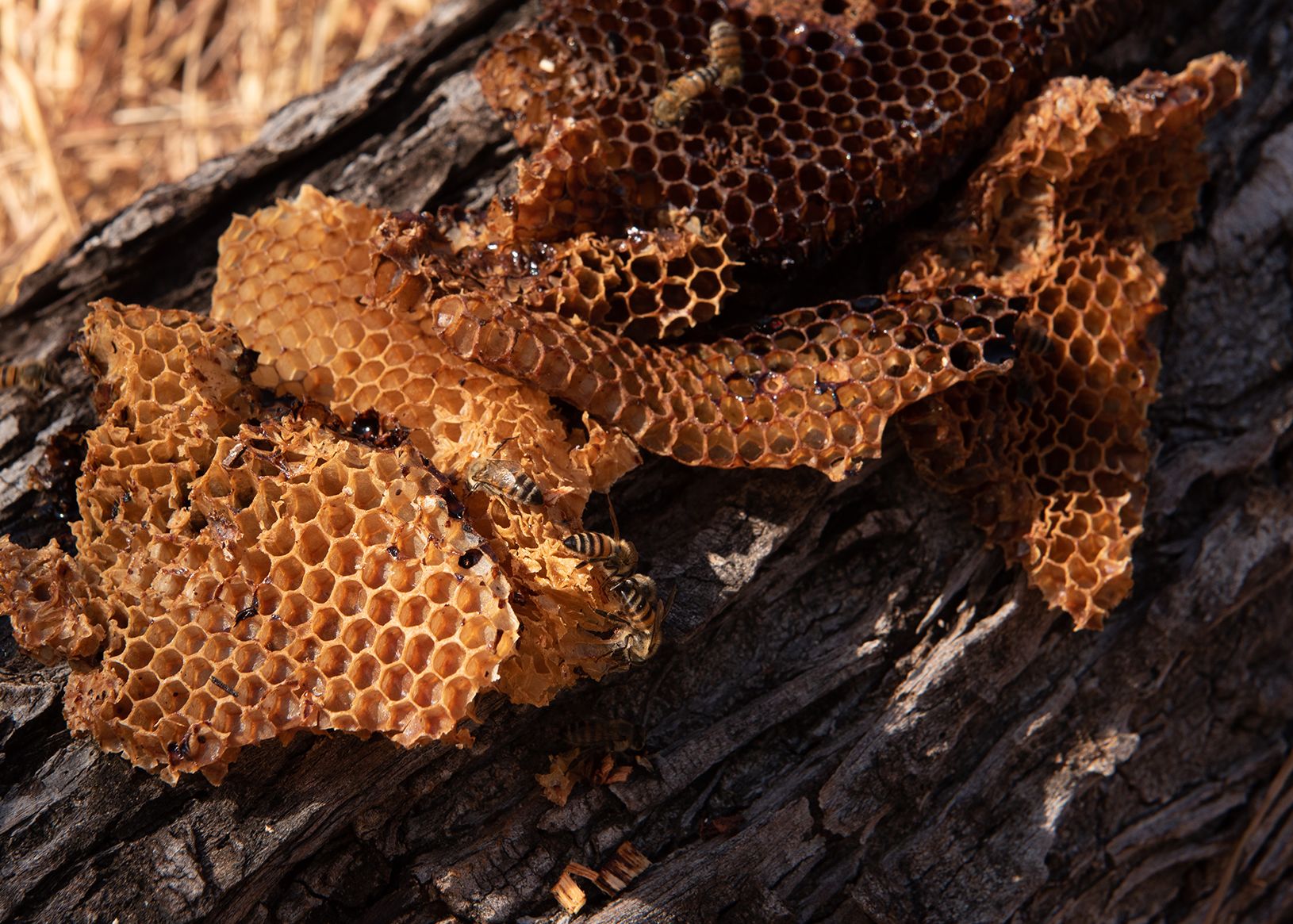
The research is a collaboration between researchers at the University of Cambridge, the University of Cape Town, and the University of California Los Angeles, and many honey hunters who inspired and supported the experiments. It was funded primarily by the European Research Council.
Reference: Spottiswoode, C.N. and Wood, B.M: ‘Culturally determined interspecies communication between humans and honeyguides.’ Science, Dec 2023. DOI: 10.1126/science.adh4129
Photographs: Claire Spottiswoode
The text in this work is licensed under a Creative Commons Attribution-NonCommercial-ShareAlike 4.0 International License
